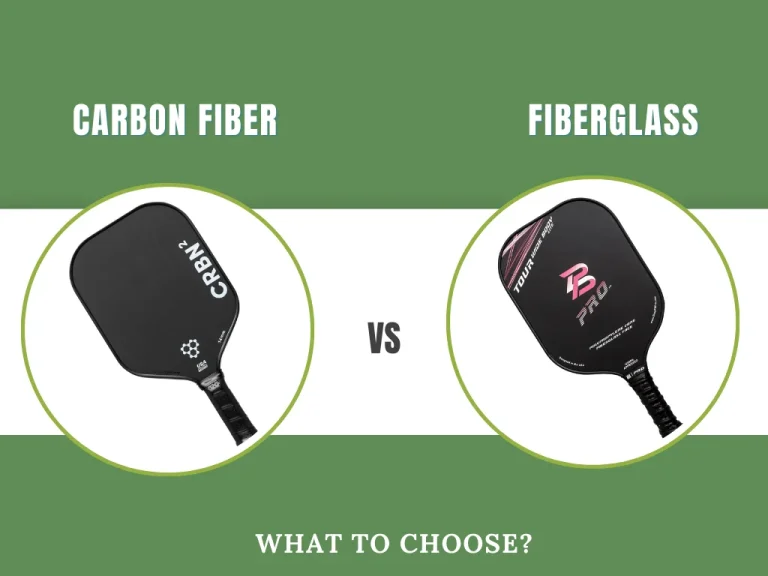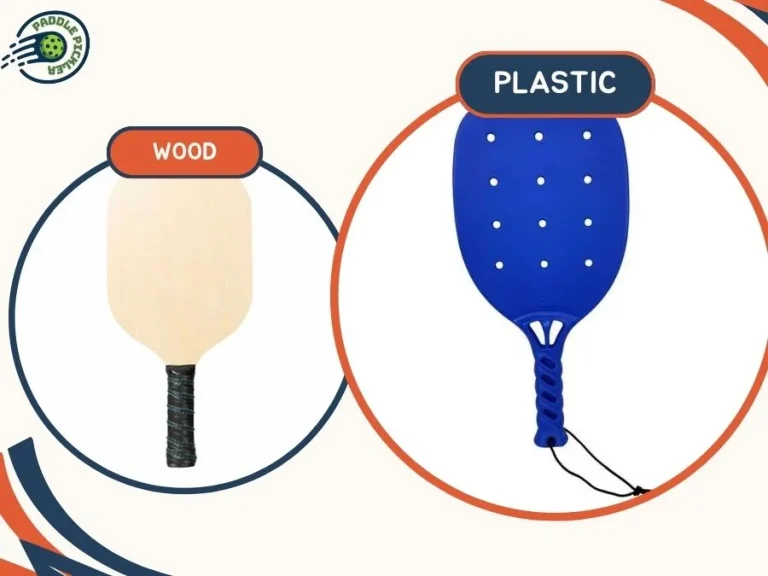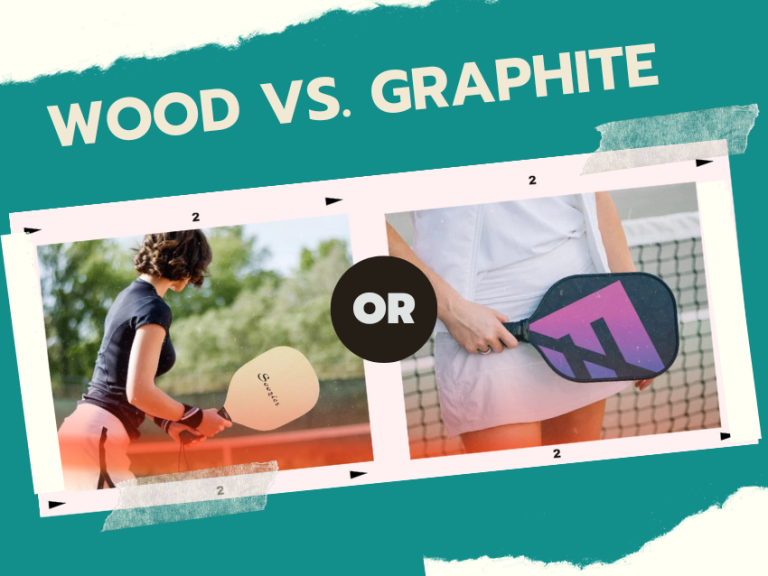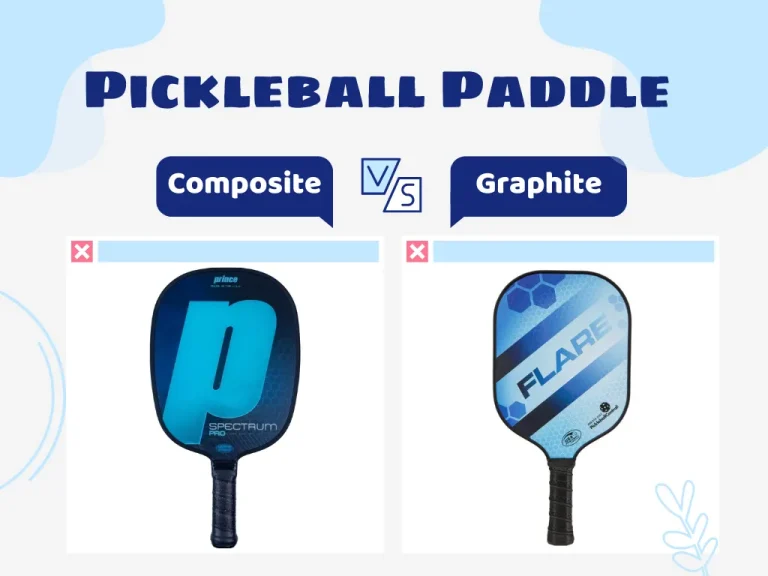The pickleball paddle you use can make or break your court game. After a few matches, an inevitable question pops up in your mind: What is the best pickleball paddle material for beginners and seasoned players?
You’ve probably researched online and stumbled across the two most promising candidates: Graphite vs. fiberglass pickleball paddles. But how significantly do they differ?
Come take a tour with us on how graphite and fiberglass pickleball paddles differ from each other, and how to purchase the right pair to spend more valuable time with your co-players!
Key Takeaways
- Graphite paddles are lighter and offer more control and power, while fiberglass paddles provide better flexibility and ball control.
- Though graphite paddles generally prove more durable, both can have a similar lifespan with good care.
- In terms of weight, graphite paddles weigh from 7.0 to 8.5 ounces, making them lighter and easier to handle. Conversely, fiberglass paddles range between 6.8 to 8.2 ounces and are more stable to hold.
- Most beginners will choose fiberglass paddles due to their forgiving nature, while advanced players often prefer the precision and control offered by graphite paddles.
Table of Differences: Graphite vs. Fiberglass Pickleball Paddles
| Differences | Graphite Paddles | Fiberglass Paddles |
|---|---|---|
| Performance | Tougher | Softer |
| Durability | Highly durable | Less durable |
| Weight | Lighter | Heavier |
| Cost | Marginally more expensive | More affordable |
| Skill Level | Preferred by advanced players | Preferred by beginners |
| Sound | Quieter | Varied, with different noise levels |
Graphite for Power. Fiberglass for Flexibility.
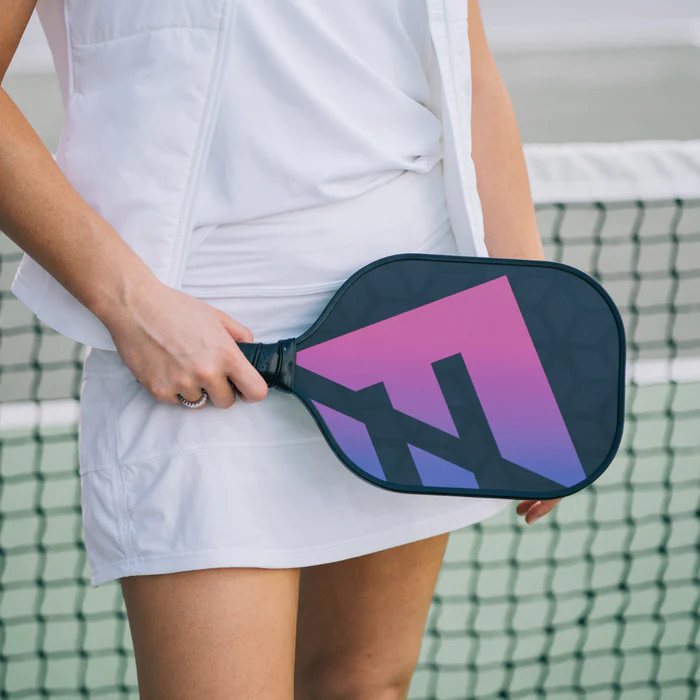
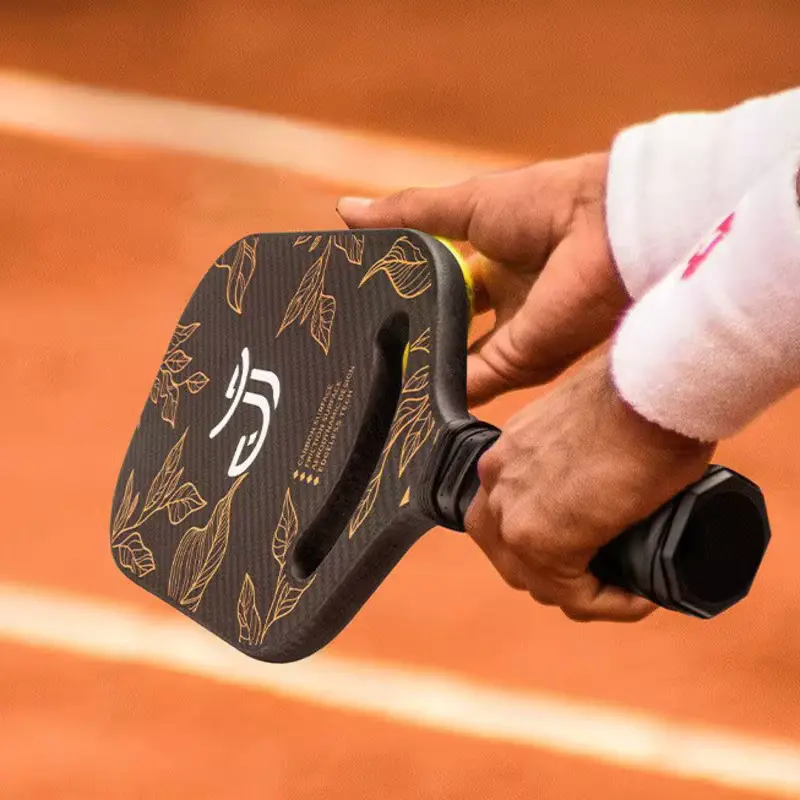
If you prefer a lighter yet durable material, a graphite pickleball paddle is more suitable than a fiberglass one.
Known for their thermal resistance and lightweight nature, graphite pickleball paddles allow players to deliver strong, accurate shots. Because the construction feels tougher to the touch, it makes these baddies ideal for hitting direct blows.
On the other hand, a fiberglass pickleball paddle is more flexible than graphite pickleball paddles, making them perfect for gripping. Fiberglass is eco-friendly, strong, and highly vibration-resistant, making it perfect to deliver quiet yet powerful shorts. The softer surface will help you enhance ball control, whether spinning or spotting.
Graphite Vs. Fiberglass: Durability and Maintenance
Graphite paddles are highly durable, chipping-and-cracking resistant than their fiberglass counterparts. They are also more intact than those made with softer materials.
While graphite paddles are generally durable, their lifespan can be influenced by the manufacturing process and the quality of the materials used. Building Pickleball (a YouTuber with 5K subs) shares that a well-made graphite paddle can last from six months to a year, but with heavy use or high-level play, this might be reduced to three to six months.
Meanwhile, fiberglass paddles are slightly more prone to wear and tear compared to graphite pickleball paddles. Over time, the fibers in fiberglass paddles can break down, thus reducing its effectiveness. And just like their graphite counterparts, a pair of fiberglass paddles can last anytime between three months to two years depending on care.
Weight and Handling
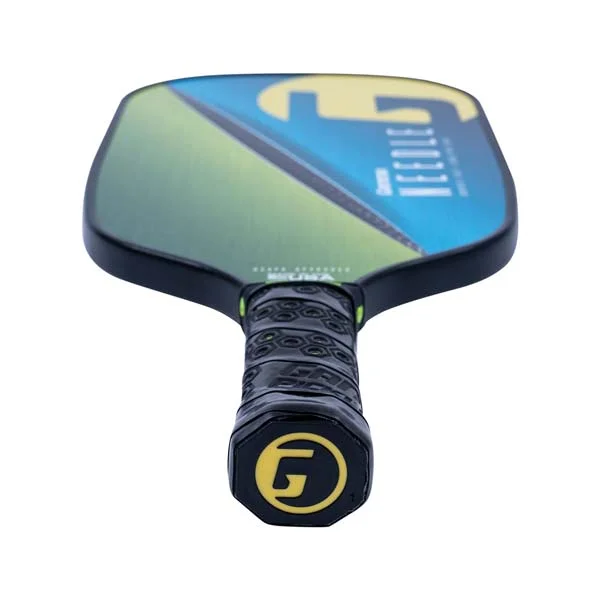
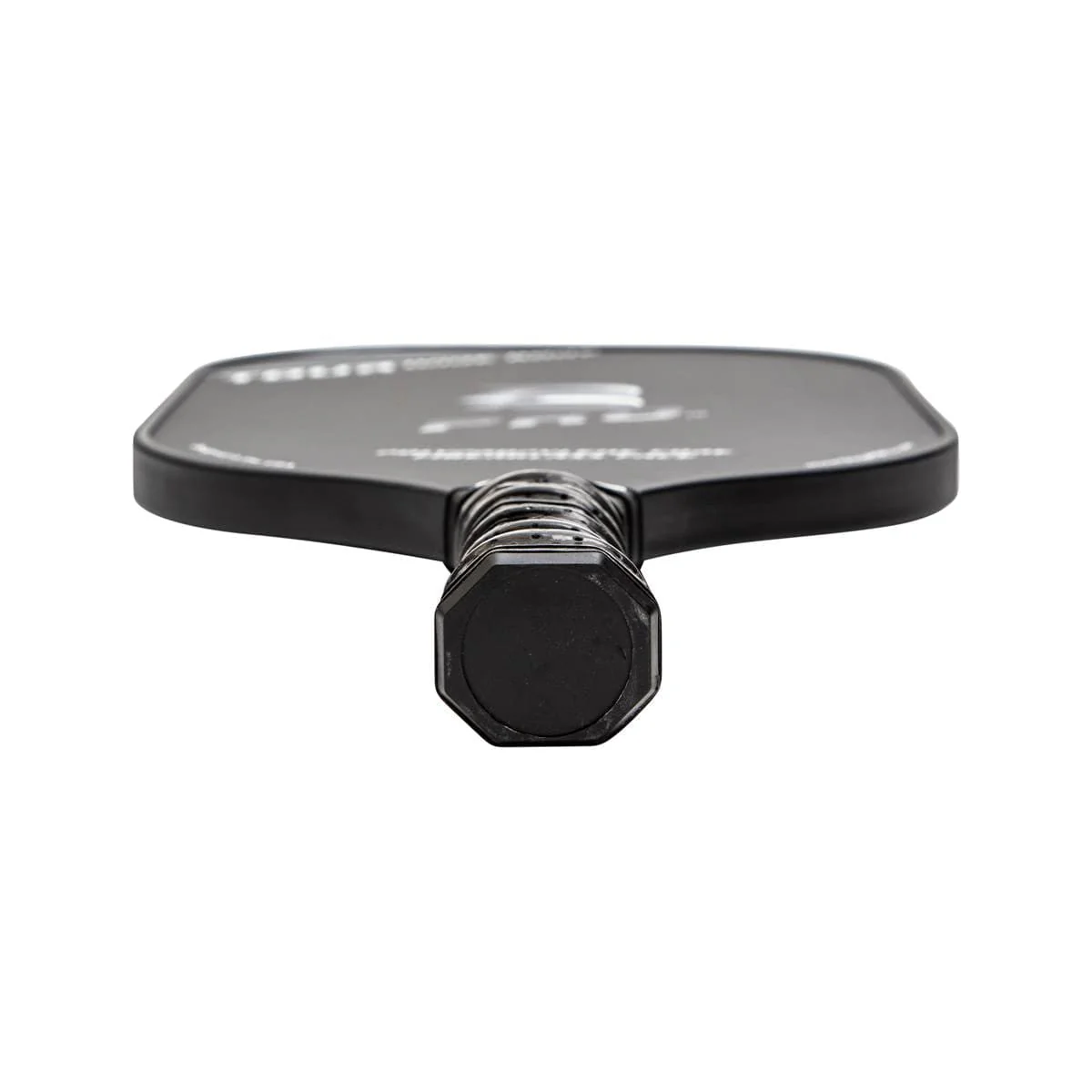
A typical graphite pickleball paddle generally weighs between 7.0 to 8.5 ounces. Meanwhile, the typical weight of fiberglass paddles is between 6.8 to 8.2 ounces. Here’s a more detailed breakdown of weight categories between both:
| Type | Graphite paddle (ounces) | Fiberglass paddle (ounces) |
| Lightweight | 7.0 – 7.5 | 6.8 – 7.5 |
| Midweight | 7.6 – 8.0 | 7.5 – 8.2 |
| Heavyweight | 8.1 – 8.5 | > 8.2 |
Graphite paddles are typically lighter than fiberglass paddles, offering more ease to handle during practice sessions.
Being a little heavier, fiberglass paddles can actually bring more stability to the game. The weight adds to producing more powerful shots, but it might also make the paddle less agile.
Again, trying out to understand what the difference is between weight and handling is key when choosing a paddle.
Cost and Value Comparison
We have scoured every corner of the Internet to find the top picks of pickleball paddles for you, and here’s what we found:
Due to their higher durability and performance, graphite paddles’ prices might go up to $530, but the common range is between $49 and $79. If you play pickleball more than three times a week and are serious about competing, we recommend investing in a good pair that would help you excel in the game.
Fiberglass paddles, on the other hand, have a less wide price range: $19 – $135+, with around $50 per set being the most common choice. This makes them accessible to a broader range of players – newbies included!
Player Preferences and Skill Levels
When it comes to selecting pickleball paddles, player preferences and skill levels can make all the difference.
For beginners, fiberglass paddles are often recommended due to their gentler surface and enhanced ball control. These paddles are typically heavier, thus providing more power in shots and making them easier for new players to develop their skills.
Advanced players, on the other hand, tend to go after the power and control graphite paddles are known for. A pair of graphite paddles are lighter, allowing them to swing faster and shoot more accurately.
This is the top priority for some seasoned players:
- For Ben Johns, a top-ranked pickleball player, graphite paddles like the JOOLA Ben Johns Hyperion CFS Swift are an excellent choice that offers the control and precision needed for his advanced playing style.
- Anna Bright, ranked #2 in women’s doubles, prefers the Joola Scorpeus CFS 14mm paddle for its rapid response and elite power – a staple for her aggressive and fast-paced gameplay.
- A top player in men’s singles and doubles, JW Johnson uses the Franklin 17mm Signature Paddle Carbon STK for its touch, control, and spin potential to advance his games .

Other Considerations for Graphite and Fiberglass Pickleball Paddles
Several brands are known for producing high-quality graphite and fiberglass pickleball paddles. When making your purchases, always check out the warranty and customer support section.
Environmental factors such as temperature and humidity can greatly affect both graphite and fiberglass paddles. Make sure to also read feedback and reviews from other players before you.
In Short
Switching up your paddles all the time is going to hold your game back, as it takes a while to really get used to a new paddle. If you’re serious about improving your game, find a paddle that works well for you and just stick with it.
- Graphite Paddles: Best for advanced players due to their lightweight, power, and control.
- Fiberglass Paddles: Better for beginners, offering flexibility and enhanced ball control.
Find a paddle that suits your needs and stick with it for consistent improvement in your game. Happy playin


